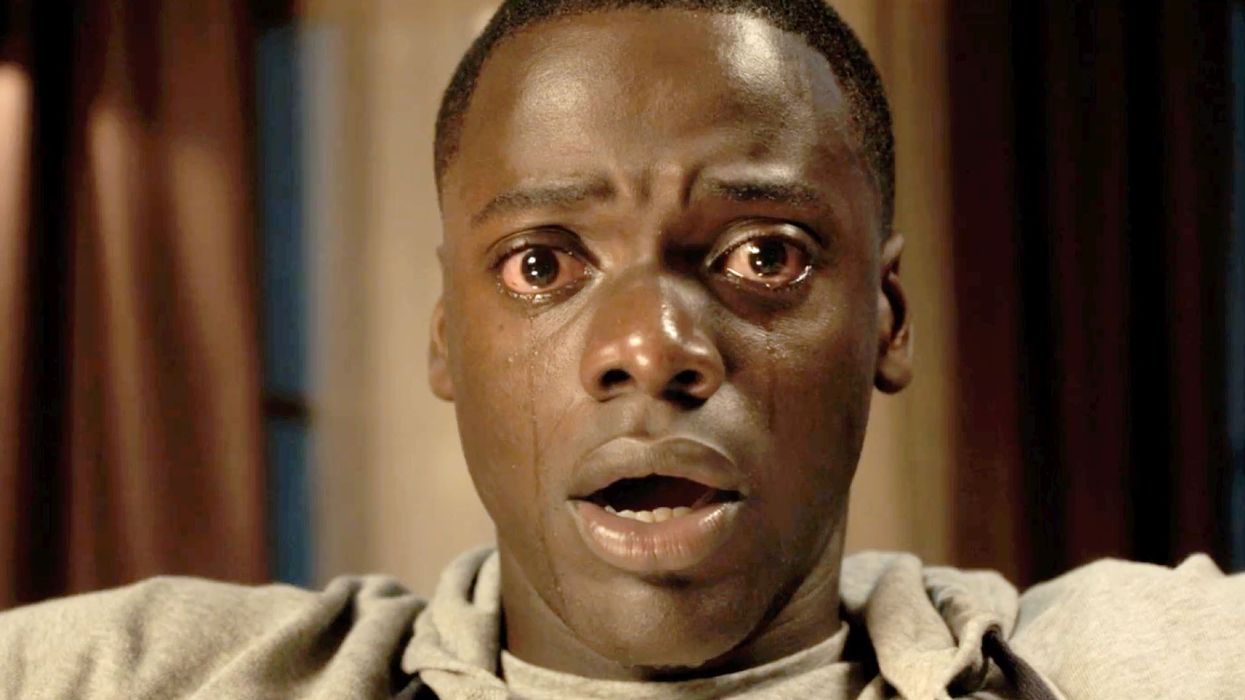Watch: How 'Get Out' Gives Us a New Perspective on Horror
In this essay, Michael Tucker looks at how 'Get Out' uses and subverts the rules of horror in order to bring a new perspective to the genre.

At the 90th Academy Awards, Jordan Peele won an Oscar for Best Original Screenplay for Get Out, his debut film as a writer/director, and a movie that has become, in little more than a year, a classic of the horror genre. In this essay, Michael Tucker of Lessons from the Screenplay looks at the structure of the film to see how Peele both uses, and subverts, horror tropes to make his story work so well. (This post contains spoilers, but if you haven't seen this one yet, what have you been doing?)
A new source of tension
First, the film uses a "specific protagonist" in a "universal situation," that is, a young African-American man, Chris, visiting his white girlfriend's parents for the weekend. Peele says he took some inspiration from Guess Who's Coming to Dinner, the Sidney Poitier classic, but the "meet the parents" concept is a fish-out-of-water story that is familiar to almost everyone, and relatable.
But then, the movie takes the familiar and makes it uncanny, or literally, "un-homelike." While many horror movies have featured the suburbs as a place where horror happens to the characters, very few have made the suburbs the source of horror for an outsider in the way that Peele's film does. And by making Rose's parents "racially clumsy" (in Peele's words) instead of out-and-out hostile, the audience is further put off-guard.
"Some Keyser Söze shit"
A huge surprise comes from the character of Chris' girlfriend Rose, who at first empathizes with Chris and helps him through his discomfort at the treatment he receives. For a while, she's a big part of what keeps him, and the audience, guessing. At first, Peele had planned to reveal her place within the plot earlier in the film, but then he says he realized that, "if you could pull some Keyser Söze shit, why would you not?" So Peele decided to have Rose's reveal come as a big twist.
By withholding the moment of that character's revelation, Peele knew that he could get the maximum surprise out of audiences, who would be thinking, "there's no way Universal Studios would allow the one good white person in this film to also be evil—there's no way they would do that!" So when that's just what happens, audiences are completely disorientated, which is just where Peele wanted them to be.
Reversing our desire for help to arrive
Usually in a horror film, the authorities are one of the last places a character can look for salvation. But in this case, because of how we've seen the police officer behave towards Chris at the beginning of the film, when the authorities arrive at the end, and at the worst possible moment, there is a collective moment of dread for the audience (this is also a good example of planting the end of your story in the beginning).
It also makes the reveal of Rod's character that much more cathartic, and makes it easy to see why Peele elected not to use one of the alternate endings he'd had in mind.
Get Out is a classic example of a film that uses and subverts genre, but one of the reasons it's successful is the way in which it places a specific protagonist with a unique story in a universal situation, making the film relatable for many different audiences. By doing this, the film wins the trust of audiences, who are willing to go along on this familiar (but unfamiliar) ride. If you can do the same with your film, you might write a really great script. And you might even win an Oscar (hey, you never know).
Source: Lessons from the Screenplay














